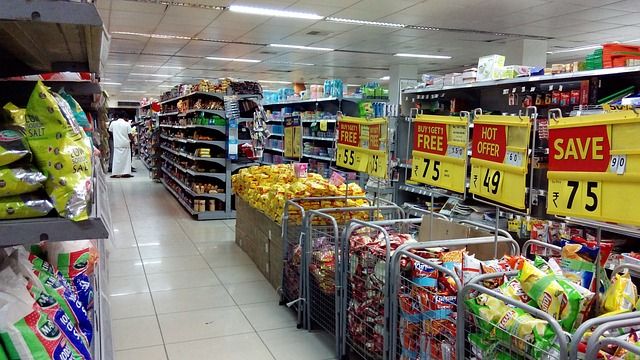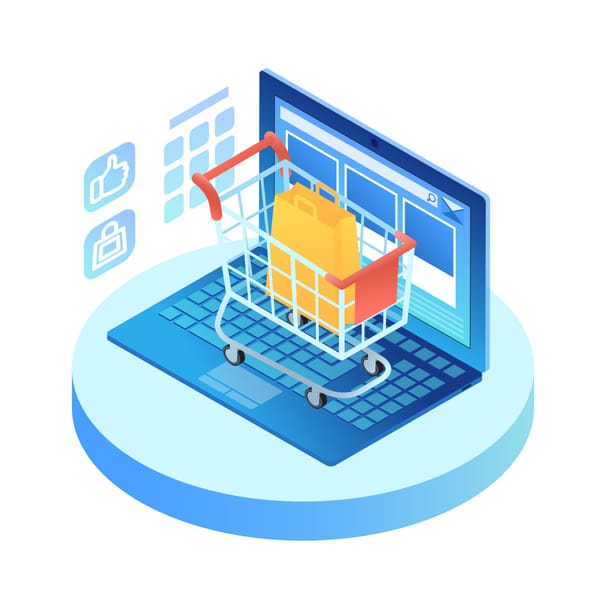How Fast-Moving Consumer Goods (FMCGs) are Adapting to Changing Consumer Behaviour

Unraveling the world of Fast-Moving Consumer Goods (FMCGs)
Fast Moving Consumer Goods (FMCGs) are the everyday items that quickly sail off supermarket shelves. Renowned for their affordability and frequent repurchasing rates, FMCGs command a crucial role in the economic landscape, with prominent industry participants like Unilever utilizing their expertise to considerably contribute to the sector. The swift nature of these products necessitates a well-structured supply chain - from raw material procurement to distribution and retailing - which in turn implies a significant focus on FMCG logistics. Balancing the high inventory turnover typical of FMCGs with accurate and reliable shipping solutions is pivotal. A well-structured supply chain is the backbone of any successful FMCG company. It is the engine that drives efficiency, cost savings, and ultimately, customer satisfaction.
Impact of evolving consumer behavior on FMCGs
Consumer behavior significantly impacts the FMCG industry, with shifts in consumer preferences stimulating the industry’s adaptation, innovation, and growth strategies. Prices, as part of the pricing strategies, play a crucial role in orchestrating these changes. One underpinning factor in this change is the growing health-consciousness lifespan of consumers, leading FMCG companies to adjust their focus towards healthier product options. For instance, we've witnessed a considerable shift towards whole grain foods, organic produce, and plant-based meals in the food and beverage sector, which intersects with an increase in focus over the lifespan of products. This is evident with increasing sales of healthy food products.
Further, customers' concerns about sustainability and ethical practices immensely influence their purchasing decisions, forcing businesses to adjust and rethink their pricing strategies accordingly. Consequently, FMCG firms prioritize sustainable sourcing and lifespan management of their products, aiming for production while maintaining transparency in their practices.
Disruption and Adaptation in the FMCG Industry
Trends reshaping the FMCG landscape
Businesses within the FMCG landscape are constantly evolving to keep up with emerging trends. Leaders in the field such as Pepsico, Nestlé, and the Coca-Cola company actively illustrate this constant push for evolution. These key changes include:
- Healthy and Sustainable Products: Owing to growing concerns about personal health and environmental impact, consumers are demanding healthier, sustainably produced, and packaged goods. FMCGs are responding by reformulating their product lines to focus on natural, organic ingredients and eco-friendly packaging. Tyson Foods, for instance, is a prime example of a company striving to meet these evolving consumer demands.
- E-commerce and Mobile Rise: As technology advances, online shopping, particularly via mobile apps, has grown popular in the FMCG industry. Embracing digitalization while ensuring accessibility, organizations like Nestlé and Coca-Cola now focus strongly on their e-commerce and mobile strategies.
- Technological Integration: To retain a competitive edge, FMCG businesses are employing technological adaptations like AI, machine learning, and analytics. This integration of technology not only streamlines procedures but also facilitates data-driven decision-making. It aligns perfectly with the increasing prominence of omnichannel marketing within industrial giants such as PepsiCo.
- Personalization and Customization: Companies are playing to unique preferences by offering personalized and customizable products to set themselves apart in a crowded market. The practice increases customer satisfaction and sales, as demonstrated by many Nestlé brands.
- Local and Artisan Products: The 'buy local' trend, coupled with an appreciation for artisanal craftsmanship, has disrupted the traditional monopoly of large FMCG players. It has underscored the significance of local, artisan competition.

The trends above represent the evolution of consumer attitudes, underscoring how important dynamic innovation and adaptation are for staying relevant. Through consistent engagement with fresh ideas and changes in the marketplace, FMCG giants like Coca-Cola, Tyson Foods, and Pepsico continue to strengthen their brand strategies and accommodate their target audiences effortlessly.
Consumer Behaviour and FMCGs
The rise of sustainability, health, and ethical concerns
The rise of sustainability, health, and ethical concerns among consumers is manifesting a game-changing influence on the FMCG industry. They are not just influencing purchasing decisions of fast-moving consumer goods like cosmetics and toilet paper, but also compelling businesses to rethink their strategies.
- Sustainability: With the escalating environmental crisis, consumers are demanding more sustainable products. Brands, including those in the cosmetics industry, have to respond by prioritizing environmentally friendly practices such as sustainable sourcing, eco-packaging, and reducing carbon footprints [Include Unilever's example of sustainable practices].
- Health Awareness: Consumers are becoming more health-conscious, shunning overly processed or chemically laden products like certain traditional cosmetics. FMCG brands, including those offering toiletries such as toilet paper, are consequently introducing natural, organic, and healthier alternatives to their existing product range
- Ethical Considerations: Ethical sourcing and fair labor practices are gaining importance among consumers. Brands, especially those in the cosmetics and toilet paper sector, violating these principles face the risk of consumer backlash and loss of market share. As a result, FMCGs are being more transparent about their supply chains and labor practices
The above are some of the trends shaping the FMCG landscape, indicating a shift towards more conscientious, healthier, and ethical consumption. They underscore the importance of aligning business practices with evolving consumer values.

Influence of personalization and customization on FMCGs
The influence of personalization and customization on FMCGs has been significant and transformative. Markedly seen in sectors like the soda and toothpaste industries, consumer demand for personalized products has reshaped the FMCG landscape. FMCG brands have now begun providing bespoke versions of rapidly consumed goods, such as custom soda labels or different flavored kinds of toothpaste while tailoring the consumer's shopping experiences.
- Product Personalization: From Coca-Cola’s “Share a Coke” campaign to Nutella’s personalized jars, brands are offering consumers a chance to customize their favorite sodas or spreads, often using a pre-defined template for personalization. This strategy not only enhances customer satisfaction but also forges a deeper emotional bond between consumers and their chosen FMCG products, whether it's a familiar brand of soda or a trusted brand of toothpaste.
- Customized Marketing: Utilizing advancements in data analytics, FMCG companies, like those in the soda and toothpaste sectors, are developing personalized marketing strategies. These strategies involve sending tailored messages to specific consumer segments, forming the bedrock of their customized marketing approaches and potentially improving customer engagement and retention rates.
- Individualized Shopping Experience: Online platforms go a step further in personalization, providing individualized shopping experiences. Whether it's suggesting a new brand of soda based on previous purchases or a different type of toothpaste according to browsing behavior, they follow a set template for personalization within their system architecture.
The benefits of personalization in the FMCG industry are numerous. These include increased customer engagement and loyalty, bolstered brand credibility, improved sales performance, and overall business growth. Nevertheless, it's crucial to maintain a balance between personalization and privacy concerns to ensure sustained consumer trust.
Winning strategies for value creation in FMCG
The FMCG sector is highly competitive, making value creation vital for survival and growth. Experience shows that companies that excel in the distribution of dry goods and candies, for example, are often among the front-runners in this challenging field. Here are some winning strategies that FMCG companies use to drive value:
- Brand Building and Product Innovation: Businesses often focus on developing powerful mass-market brands with differentiated offerings such as innovative dry goods or unique candies. They achieve this through continuous product innovation, ensuring they stay relevant to evolving consumer preferences.
- Expanding to Developing Markets: Entering developing markets early and nurturing them with popular dry goods and candies as consumers become wealthier, often proves to be a tremendous source of growth, accounting for around 75 percent of sector revenue growth over the past decade.
- Establishing Strong Retail Relationships: FMCG companies forge solid relationships with mass retailers, ensuring broad distribution and direct access to consumers, particularly for staple items like dry goods and candies. This partnership often encompasses joint innovation and in-store execution initiatives, fostering mutual growth and success.
- Operational Efficiency: Companies invest in building business models that prioritize consistent execution and cost reduction. They achieve this by focusing on high-demand products such as dry goods and candies, thereby maintaining revenue growth.
- Utilization of Mergers and Acquisitions (M&A): M&A remains a critical growth accelerator in FMCG, allowing access not only to new markets but also to new categories of products like dry goods and candies.
Making use of these strategies allows many FMCG businesses to create sustainable value over time. They also suggest a shift from the traditional synergy-based model to agile operating models, focusing on holistic growth
Evolution of FMCG with Technology and Innovation
Embracing data-driven brand development and market research
The adoption of data and analytics has significantly transformed the way FMCG companies operate. It has redefined many intangible services and products, including car washes to haircuts. These changes have brought about a shift from gut-feeling decisions to data-driven strategies, helping companies gain insights into consumer behavior, buying patterns, and market trends. Here's how FMCGs are making the most of it:
- Customer Journey Analysis: With customer data, companies can map each stage of a product's customer journey, as they become aware, choose to purchase, and experience products like haircuts. This data enables FMCGs to tailor their marketing strategies and product offerings more precisely.
- Consumer Sentiment Analysis: Social listening tools and AI-powered surveys can help companies gather real-time feedback and understand consumer sentiments towards their services, such as their thoughts on different haircuts or stylist experiences.
- Personalized Marketing: Advanced analytics enable companies to segment their customers according to their buying behaviors, enabling them to deliver personalized marketing messages efficiently and accurately.
- Competitor Analysis: Data-driven market research can also reveal competitor strategies, offering insights into their service offerings, prices, and market share in terms of services like haircuts. This valuable data helps FMCGs to position themselves strategically in the market.
Embracing data-driven brand development and market research equips companies with actionable insights, enabling them to adjust their product development strategies rapidly in response to changing consumer preferences and market trends, be it for tangibles or intangibles like haircuts.
Bottom line: The necessity to understand FMCG and CPG
Understanding FMCG (Fast Moving Consumer Goods) and CPG (Consumer Packaged Goods) is crucial for industry players, marketers, and investors alike. Quick-moving goods like a bottle of Coca-Cola from the Coca-Cola company, fall under the FMCG category, while brands like Tyson Foods also fiercely compete in this sector. Though often used interchangeably, these terms represent two distinct sectors of the consumer market, each with its own set of trends, challenges, and opportunities.
FMCG refers to products that sell quickly and at relatively low cost. For instance, items like toiletries, groceries, over-the-counter drugs, or even a thirst-quenching drink from the Coca-Cola company. It's a highly competitive sector, rapidly evolving in response to changes in consumer preferences, technology, and market dynamics.
In contrast, CPG typically includes durable goods that consumers buy infrequently and maintain over an extended period. These items range from electronics, clothing, and household goods.
Both FMCG and CPG companies' reactions to sweeping changes in consumer behavior, market situations, or emerging technological trends can significantly impact their business success. For instance, the dividends for Coca-Cola Company (The) (KO) could sway based on this. Therefore, understanding them, their differences and their interconnectedness is vital for effective strategy formulation and decision-making
What are the main differences between CPG and FMCG?
Though the terms Consumer Packaged Goods (CPG) and Fast-Moving Consumer Goods (FMCG) are often used interchangeably, some subtle differences come into play:
- Product Use Frequency: As the name suggests, FMCGs are products that are consumed quickly and bought repeatedly, such as soda or toothpaste. These are items that are intended to be sold rapidly, including perishable items like dairy products or daily toiletries as well. On the contrary, CPGs typically entail products such as clothes and appliances that consumers buy and use over a more extended period.
- Price Point: FMCGs, such as soda and toothpaste, are generally lower-priced due to their perishable nature and high turnover rate. On the other hand, CPGs tend to be costlier and require a higher initial investment by consumers.
- Sales Impact: Given their frequent usage and fast replacement rate, FMCG sales, encompassing goods often have higher impacts on a brand's long-term prospects than CPG sales, due to consistent customer demand.
- Regional Use: In North America, industry professionals typically use the term CPG, while internationally, FMCG, referring to goods like soda and toothpaste, is often the preferred terminology.
Despite these differences, both sectors share similarities — they operate in large markets, involve mass consumption, and rely on strong branding.
How do fast-moving consumer goods work?
Fast-moving consumer goods (FMCG), also known as Consumer Packaged Goods (CPG), are low-cost products that sell quickly, have a short shelf life, and are bought repeatedly. This category includes items like toiletries, haircuts, beverages, packaged foods, toilet paper, over-the-counter drugs, and other consumables.
Here's how it works:
- Mass Production: FMCG companies often produce goods, such as toilet paper, in large quantities to meet high consumer demand and ensure cost-effectiveness. Services, like haircuts, are also provided in high quantities due to the recurring need for them.
- Extensive Distribution Networks: FMCG businesses work on creating thorough distribution networks to ensure the broadest possible reach for their products and services, including haircuts and toilet paper. They often collaborate with various wholesalers, retailers, and e-commerce platforms.
- Impulse Purchasing: Given their low cost and high utility, FMCGs like toilet paper and even quickly accessible services like haircuts often influence impulse buying. They are typically placed near store checkout counters to capitalize on this behavior.
- Regular Consumption: Since these items are frequently consumed and quickly depleted (like food, drinks, toilet paper, and even personal care services like haircuts); consumers regularly replenish them, leading to consistent sales for FMCG companies.
- Marketing and Promotions: Marketing plays a significant role in FMCG sales. Promotions, introductory offers, and discounts are common strategies used to attract consumers and boost sales.
Understanding the workings of FMCG helps both businesses and consumers. For companies, it helps in strategizing production, marketing, and sales efforts. For consumers, it assists in making informed buying decisions
Conclusion
The future landscape of FMCGs is set to evolve dramatically, marked by cutting-edge technology, changing consumer preferences, and the shifting global economy. In this changing landscape, candies and dry goods will also transform to meet new demands. Here are a few changes we can anticipate:
- Sustainable and Ethical Products: Given growing environmental and personal health awareness, FMCG companies, including those producing candies and dry goods, are expected to focus more on sustainable ingredients, eco-friendly packaging, and healthier products. They will be keen on creating snacks and beverages that meet these criteria.
- Increased Technological Integration: Tools like data analytics, AI, and machine learning will be increasingly employed, contributing to product innovation and customer experience. They will play key roles in the personalized marketing of snacks, candies, dry goods, and other FMCGs.
- Digital Channels: With the continued expansion of e-commerce and digital marketing, FMCG companies, especially those operating in the snacks, candies, and dry goods segments, need to bolster their online presence, enhance digital customer experiences, and diversify sales channels aligning with the shift towards online grocery shopping.
- Localism and Artisanship: The 'Buy local' and artisanal product trends continue their rise. Key to this will be FMCG companies' comprehension of these market segments, especially regarding artisanal snack offerings such as candies and dry goods, and the consideration of partnerships or acquisitions with smaller niche businesses.
- Value-Based Shopping: As consumers' interest in product origins and production methods intensifies, trust-building through candor, transparency, and authenticity becomes crucial. This ethos will be particularly paramount in the marketing and production of healthy, ethically-produced snacks, candies, and dry goods.





